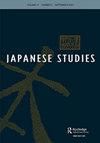How are Part-Time Laboring International Students Incorporated into Host Labor Markets after Graduation? The Case of South and Southeast Asians in Japan
IF 0.4
Q3 AREA STUDIES
引用次数: 4
Abstract
ABSTRACT A recent increase in the number of international students employed in low-skilled part-time work raises the question; are they incorporated into host labor markets after they graduate, and if so, how? This article addresses this issue by examining the case of South and Southeast Asian students in Japan. Using both quantitative and qualitative data, this article shows that labor market incorporation occurs for most SSA students and takes two different forms. First, an analysis utilizing the Japan Student Services Organization datasets on student pathways after graduation (2014–2017) revealed that the primary form is their (re)incorporation as low-skilled part-time workers. Mostly enrolled in vocational schools, these students go on to another school upon graduation, which in effect means an extension of their status as student part-timers. Second, while incorporation as full-time workers also occurs, interviews with these workers suggested that they are employed as a workforce that serves the migrant population and/or supplements shortages of native-born workers. Based on these results, this article argues that SSA students in Japan are incorporated into the host labor market as complements to the labor needs that Japan’s new demographic reality has created.非全日制留学生毕业后如何融入东道国劳动力市场?南亚和东南亚人在日本的案例
摘要:最近从事低技能兼职工作的国际学生人数的增加引发了一个问题;他们毕业后是否被纳入东道国劳动力市场?如果是,如何融入?本文通过考察在日本的南亚和东南亚学生的案例来解决这个问题。利用定量和定性数据,本文表明,大多数SSA学生都存在劳动力市场整合,并采取两种不同的形式。首先,利用日本学生服务组织(Japan Student Services Organization)关于毕业后(2014-2017)学生路径的数据集进行的分析显示,主要形式是他们(重新)成为低技能兼职工人。这些学生大多就读于职业学校,毕业后又去了另一所学校,这实际上意味着他们作为兼职学生的身份得到了延长。其次,虽然也有全职工人的加入,但对这些工人的采访表明,他们受雇于为移民人口服务和/或补充本地出生工人短缺的劳动力。基于这些结果,本文认为,日本SSA学生被纳入东道国劳动力市场,是对日本新的人口现实所创造的劳动力需求的补充。
本文章由计算机程序翻译,如有差异,请以英文原文为准。
求助全文
约1分钟内获得全文
求助全文

 求助内容:
求助内容: 应助结果提醒方式:
应助结果提醒方式:


